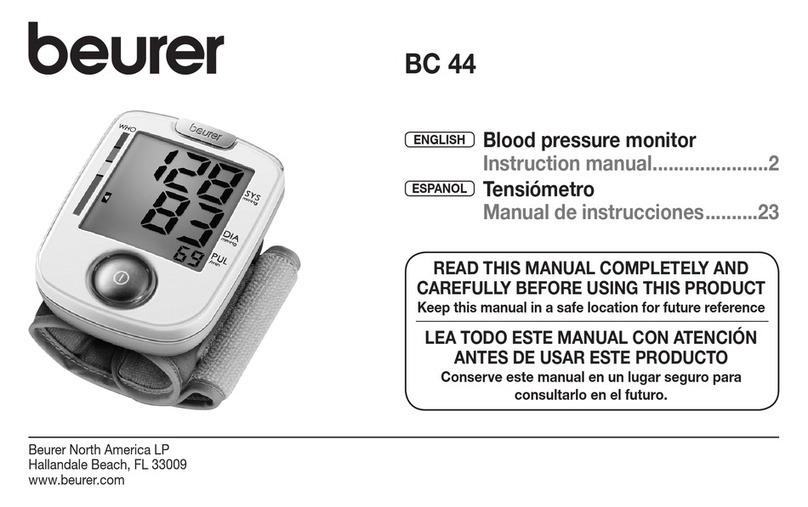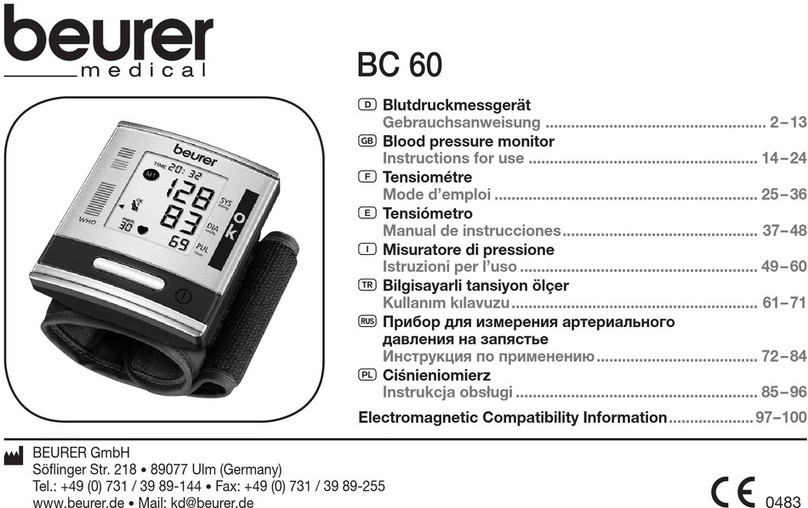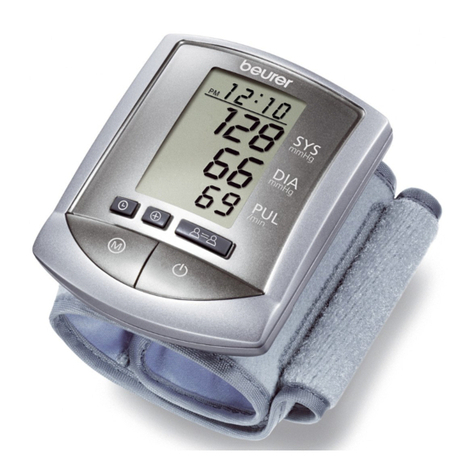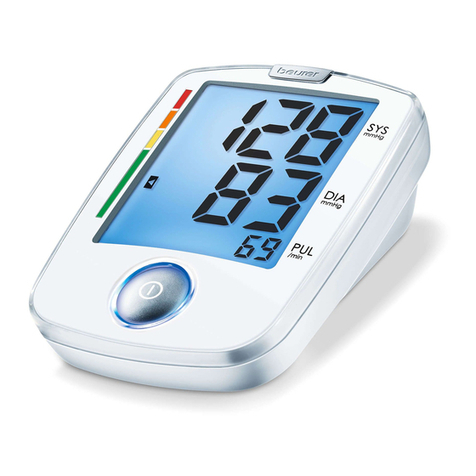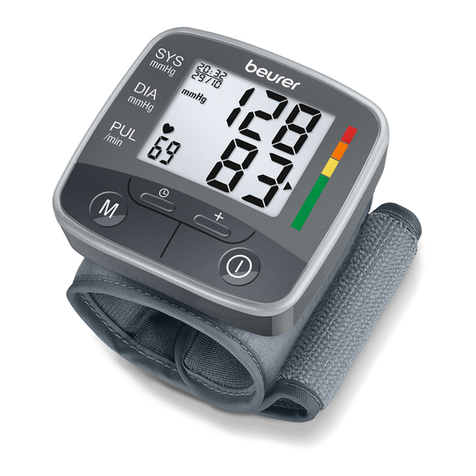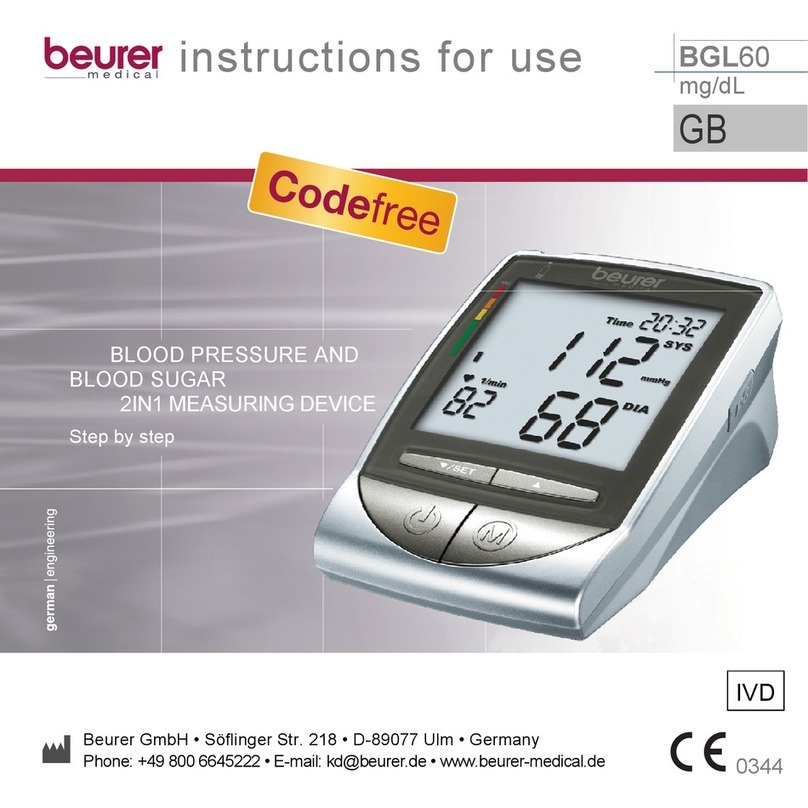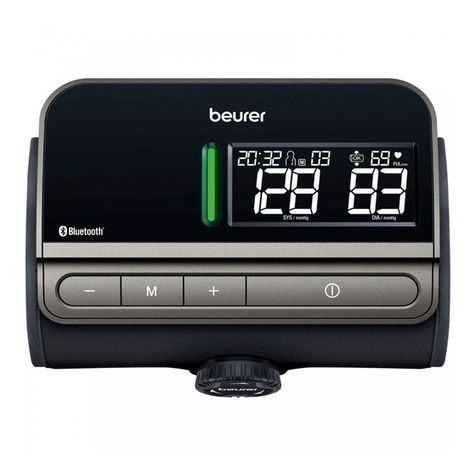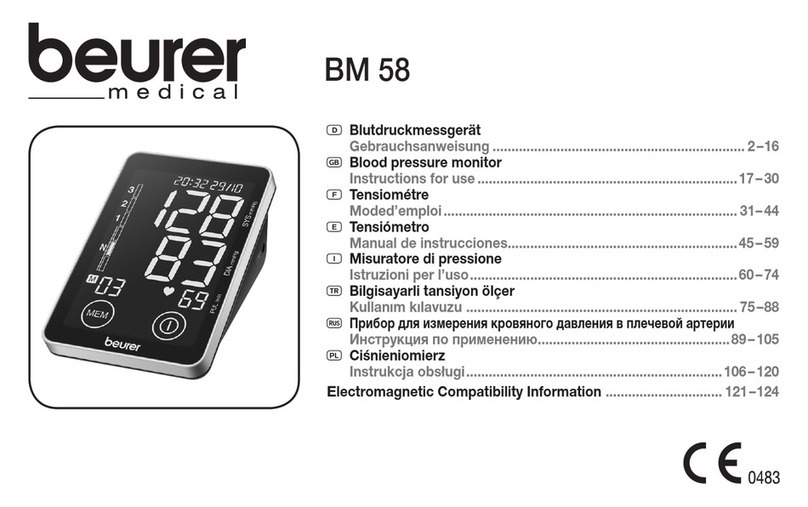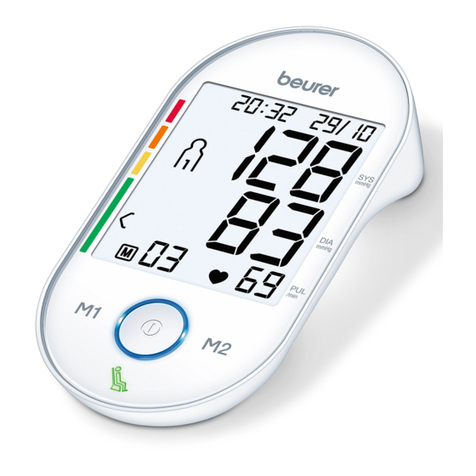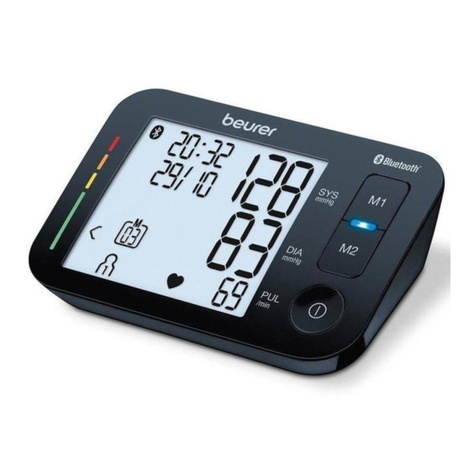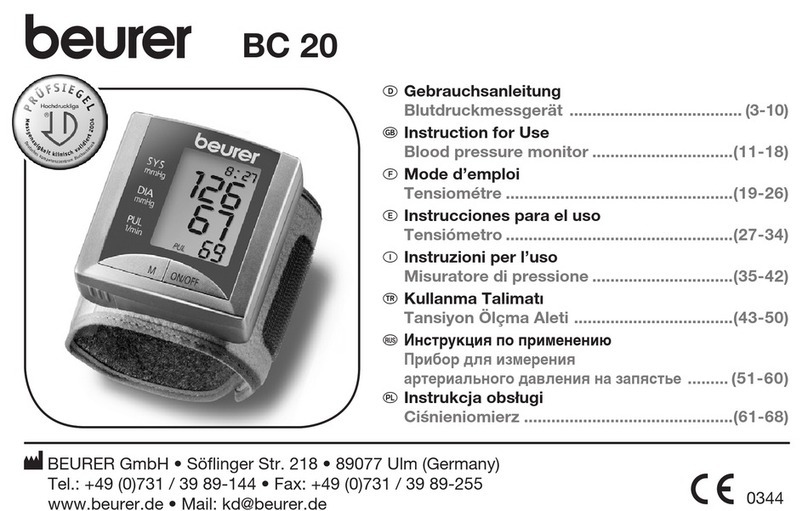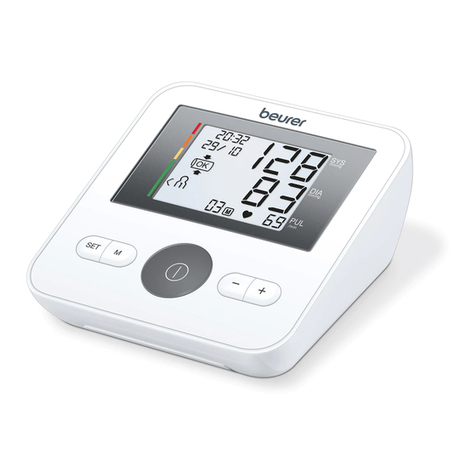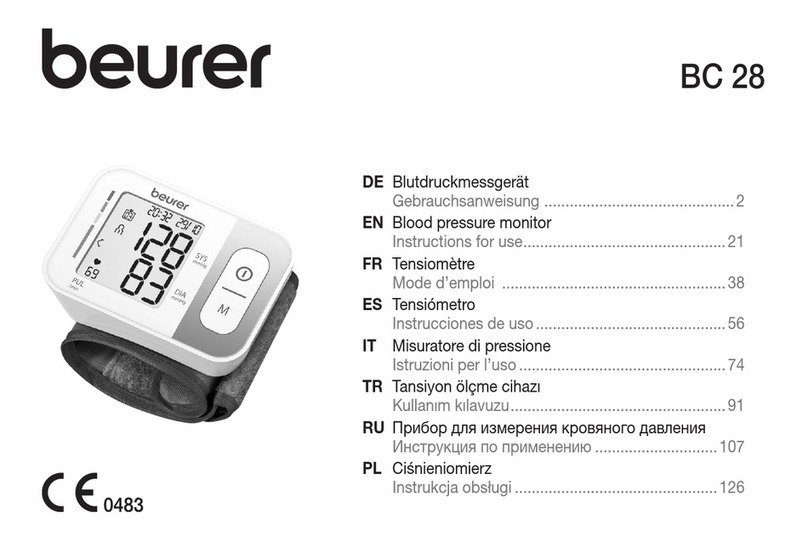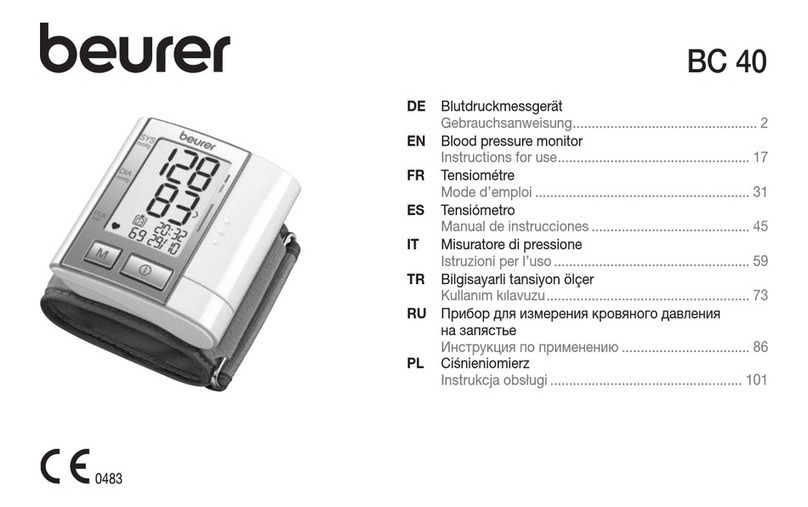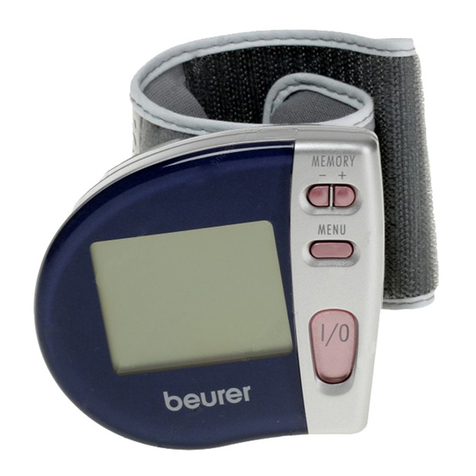
0483
The CE labelling certifies that the
product complies with the essential
requirements of Directive 93/42/EEC
on medical devices.
Certification symbol for products that are
exported to the Russian Federation and
CIS countries.
Notes on use
•
In order to ensure comparable values, always
measure your blood pressure at the same time of
day.
•
Before every measurement, relax for about 5 min-
utes.
•
If you want to perform several measurements on
the same person, wait 5 minutes between each
measurement.
•
Do not take a measurement within 30 minutes of
eating, drinking, smoking or exercising.
•
Repeat the measurement if you are unsure of the
measured value.
•
The measurements taken by you are for your infor-
mation only – they are no substitute for a medical
examination! Discuss the measured values with your
doctor and never base any medical decisions on
them (e.g. medicines and their dosages).
•
Do not use the blood pressure monitor on new-
borns or patients with pre-eclampsia. Before using
the blood pressure monitor during pregnancy, we
recommend you consult with adoctor.
•
Cardiovascular diseases may lead to incorrect
measurements or have a detrimental effect on
measurement accuracy. The same also applies to
very low blood pressure, diabetes, circulatory dis-
orders and arrhythmias as well as chills or shaking.
•
In the case of restricted circulation on the arm as a
result of chronic or acute vascular diseases (includ-
ing vascular constriction), the accuracy of the wrist
measurement is limited. In this case you should use
an upper arm blood pressure monitor instead.
•
This device is not intended for use by people (in-
cluding children) with restricted physical, sensory or
mental skills or a lack of experience and/or a lack of
knowledge, unless they are supervised by a person
who is responsible for their safety or are instructed
by such a person in how to use the device. Supervise
children around the device to ensure they do not play
with it.
•
The blood pressure monitor must not be used in
connection with a high-frequency surgical unit.
4

